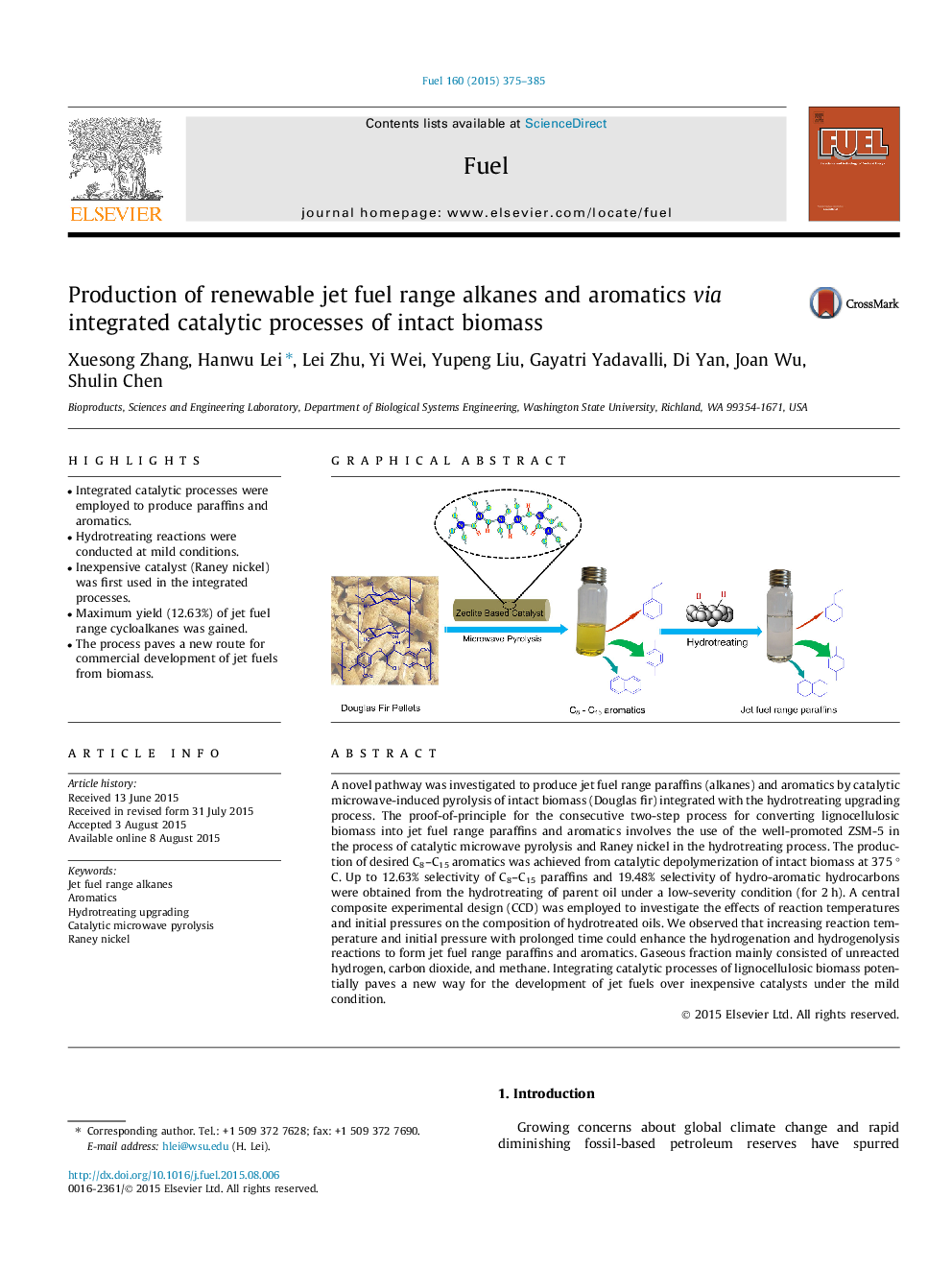| کد مقاله | کد نشریه | سال انتشار | مقاله انگلیسی | نسخه تمام متن |
|---|---|---|---|---|
| 205559 | 461112 | 2015 | 11 صفحه PDF | دانلود رایگان |
• Integrated catalytic processes were employed to produce paraffins and aromatics.
• Hydrotreating reactions were conducted at mild conditions.
• Inexpensive catalyst (Raney nickel) was first used in the integrated processes.
• Maximum yield (12.63%) of jet fuel range cycloalkanes was gained.
• The process paves a new route for commercial development of jet fuels from biomass.
A novel pathway was investigated to produce jet fuel range paraffins (alkanes) and aromatics by catalytic microwave-induced pyrolysis of intact biomass (Douglas fir) integrated with the hydrotreating upgrading process. The proof-of-principle for the consecutive two-step process for converting lignocellulosic biomass into jet fuel range paraffins and aromatics involves the use of the well-promoted ZSM-5 in the process of catalytic microwave pyrolysis and Raney nickel in the hydrotreating process. The production of desired C8–C15 aromatics was achieved from catalytic depolymerization of intact biomass at 375 °C. Up to 12.63% selectivity of C8–C15 paraffins and 19.48% selectivity of hydro-aromatic hydrocarbons were obtained from the hydrotreating of parent oil under a low-severity condition (for 2 h). A central composite experimental design (CCD) was employed to investigate the effects of reaction temperatures and initial pressures on the composition of hydrotreated oils. We observed that increasing reaction temperature and initial pressure with prolonged time could enhance the hydrogenation and hydrogenolysis reactions to form jet fuel range paraffins and aromatics. Gaseous fraction mainly consisted of unreacted hydrogen, carbon dioxide, and methane. Integrating catalytic processes of lignocellulosic biomass potentially paves a new way for the development of jet fuels over inexpensive catalysts under the mild condition.
Figure optionsDownload as PowerPoint slide
Journal: Fuel - Volume 160, 15 November 2015, Pages 375–385
